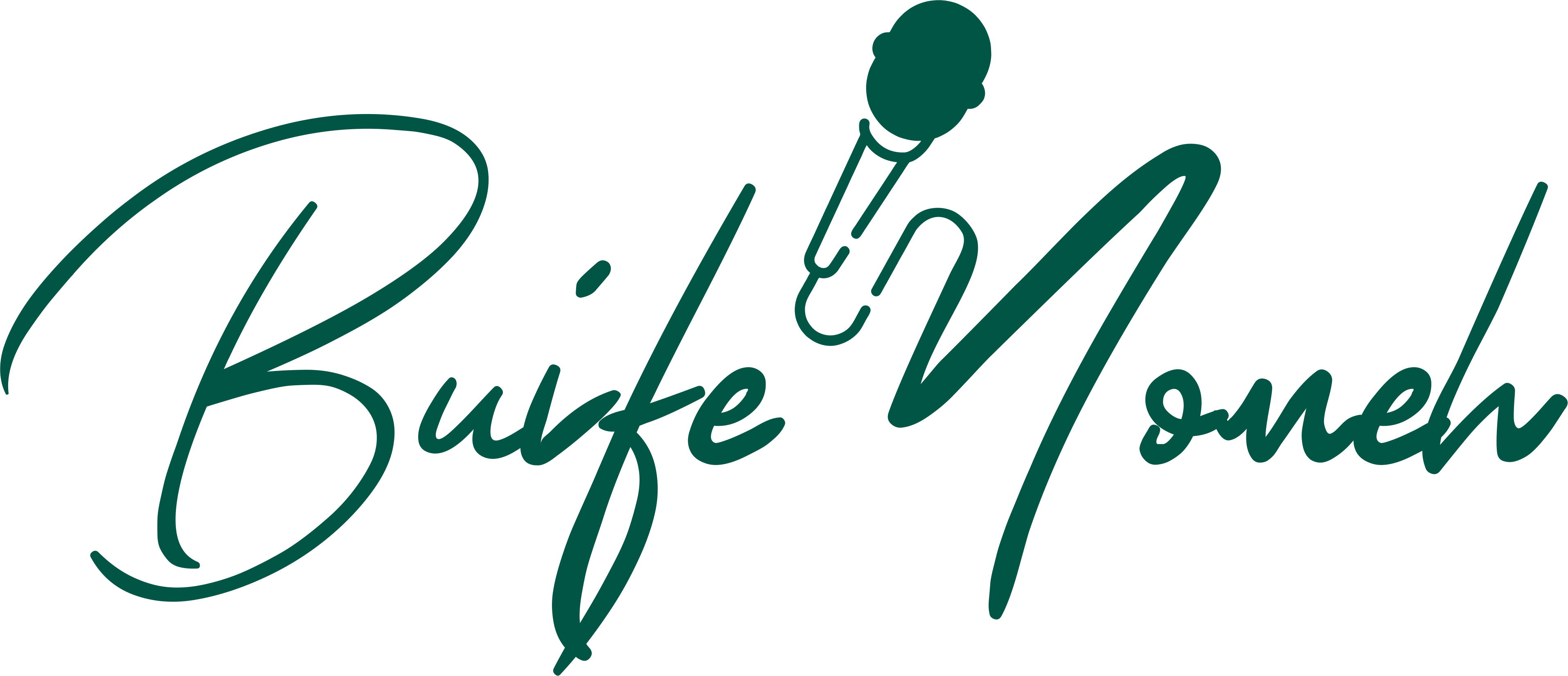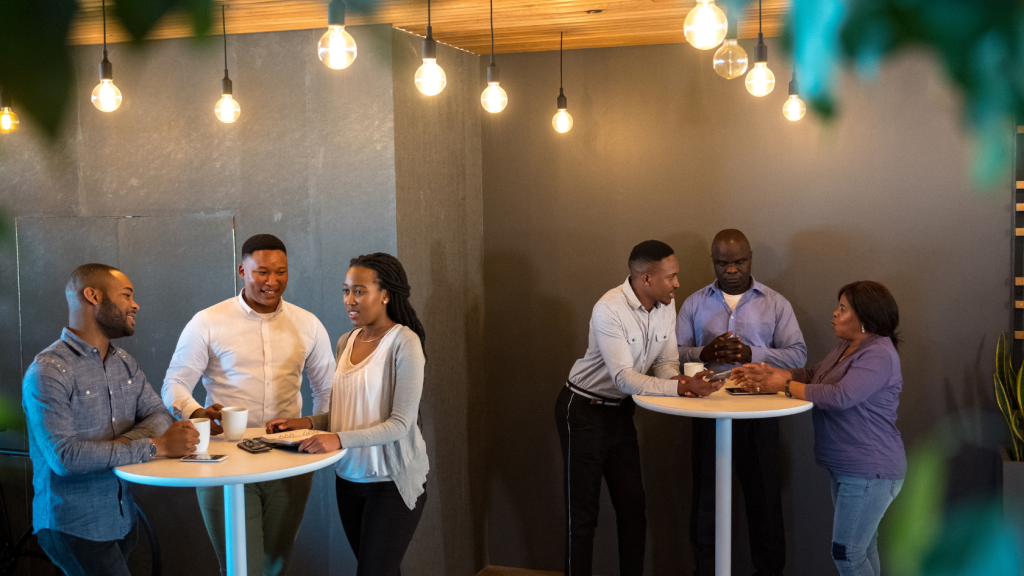This is a complete guide to using breakout rooms at in-person events.
So if you want to create more engaging, meaningful, and interactive experiences for attendees, you’ll love the practical insights and strategies in this post.
Let’s dive right in.
How Breakout Rooms Make In-Person Events Better (and Way More Fun)
If you’ve ever been to a big in-person event, you know how it feels to sit in a huge room filled with people. You’re one of many, listening to a speaker, maybe taking some notes, but let’s face it—unless you’re really tuned in, it’s easy to zone out a bit. Now, compare that to sitting in a cozy circle with a handful of people, having an actual conversation, sharing ideas, and maybe even laughing together. That’s the power of breakout rooms. They take the big, sometimes impersonal event experience and turn it into something meaningful, interactive, and, honestly, a lot more fun.
As a professional emcee and learning and development facilitator, I get to see firsthand how valuable these breakout sessions are, both for attendees and for the event as a whole. Recently, I ran a poll on LinkedIn, asking people what their favorite way to engage at events was. The majority picked breakout rooms, hands down, over other options like live Q&As, polls, or social media shoutouts. So, what makes these little sessions such a hit? Let me take you through it.
Why Breakout Rooms Matter: It’s All About Connection
Imagine this: you’re at a conference about digital marketing. There’s a speaker up front talking about the latest trends in social media algorithms. It’s fascinating, but as soon as the session ends, you’re left with this itch to discuss what you just heard. Now, let’s say the organizers have set up breakout rooms. One of them is on “Personalizing Marketing for Different Generations.” You join, and suddenly you’re in a group with 10 other people who are all facing the same challenges, brainstorming solutions in real-time, and exchanging tips. Now you’re getting specific, actionable insights—and making connections that last way beyond the conference.
This is why breakout rooms work. They turn passive listeners into active participants, giving everyone a chance to really engage and dive into topics that matter to them. In smaller groups, people feel comfortable speaking up, asking questions, and sharing ideas that might have stayed hidden in a big crowd.
The Key to Great Breakout Rooms: Make It Personal
The beauty of breakout rooms is that they’re personal, but creating that vibe takes a little planning. Let me share a story with you from an event I attended. It was a tech conference, and the organizers had set up themed breakout rooms like “Future of AI in Healthcare” and “Cybersecurity Trends.” I joined the AI session, where the moderator kicked things off with an icebreaker: “What’s the one thing in healthcare you’d love to see AI solve?”
Suddenly, people were opening up. Someone talked about using AI to streamline medical records, another shared a story about a family member who benefited from telemedicine. Before we knew it, everyone was sharing personal insights, and it felt like we were genuinely collaborating. Because the group was small, each person’s perspective added real value to the conversation, and I walked away with ideas and connections that I wouldn’t have found in a large session.
Setting Up Breakout Rooms That Really Work
If you’re organizing an event and want to include breakout rooms, a few little touches can make all the difference. Here’s what I’ve seen work best—both as an emcee guiding the experience and a learning professional designing impactful sessions.
1. Keep Groups Small and Friendly
The magic number seems to be around 8-15 people. Smaller groups feel like conversations rather than presentations. People feel more comfortable, and no one has to fight for a chance to speak. If you have a large event, you can rotate groups or even set up different sessions to give everyone a chance to join the discussion they care about.
2. Create Themes People Care About
Choosing the right topics is half the battle. Think about what the attendees would love to dig deeper into. Let’s say you’re organizing a career development workshop. Your breakout rooms could focus on themes like “Mastering Remote Work,” “Building a Personal Brand,” or “Leading with Empathy.” These are topics people want to discuss and learn about from each other.
3. Get a Good Moderator
A skilled moderator can steer the conversation and make sure everyone feels heard. At a learning breakout session I once moderated, I kept the discussion dynamic and inclusive with prompts like, “John, what are your thoughts?” or “Has anyone tried a different approach?” This kind of gentle guidance encourages participation and keeps things moving.
4. Use Interactive Elements to Keep It Fun
If you’ve been in breakout rooms that fell flat, you know how awkward it can be. To avoid this, make things interactive. I was in one room where we did a lightning poll on potential industry trends, then split into pairs to discuss our thoughts. This quick change in pace helped us get to know each other better and opened up the conversation for different viewpoints.
Additional Tips to Make Breakout Rooms Effective and Memorable
5. Tech Setup Tips for In-Person Breakout Rooms
Even in in-person events, a little tech support can go a long way. For larger breakout rooms, consider having small mics available or a mini sound system so people can hear each other comfortably. If your breakout is hybrid, set up a screen or tablet so virtual attendees can join, and designate a virtual moderator to help keep them engaged. This way, tech works to support—not detract from—the flow.
6. Icebreakers and Engagement Techniques
Start with a creative icebreaker to get everyone comfortable. For example, in a marketing session, you could ask attendees to share a memorable ad they recently saw or to introduce themselves with their “personal tagline.” In my experience, these prompts quickly loosen everyone up and create an environment where people feel encouraged to share.
7. Handling Common Challenges
Sometimes, breakout rooms can encounter a few bumps. If the room is quiet, you can use prompts like “Does anyone have a unique perspective on this?” For dominant participants, I’ve found a gentle redirection, like “Let’s hear from someone who hasn’t shared yet,” works wonders. Planning for these common issues can keep the discussion balanced and productive.
8. Encourage Post-Event Networking
To make the most of the connections built in the breakout rooms, consider creating a LinkedIn group, Slack channel, or a shared document where participants can continue their discussions post-event. At one event I hosted, a simple email with attendees’ LinkedIn profiles sent out after the event helped extend the session’s impact and encouraged further collaboration.
Real-Life Breakout Room Ideas for Different Events
Here are a few examples of breakout room setups I’ve seen that worked especially well, based on my experiences as an emcee and a learning and development professional.
- Industry Conferences: At a marketing conference, breakout rooms could focus on specific challenges like “Navigating Data Privacy” or “Creating Content for Gen Z.” Attendees can pick a room based on their biggest pain points, making sure they’re surrounded by people facing the same challenges.
- Corporate Training: Breakout rooms are perfect for training events because they allow for hands-on practice. After a presentation on, say, customer service strategies, attendees can split up to role-play scenarios or brainstorm real-world applications. This personalizes the learning experience and makes it far more memorable.
- Networking Mixers: For a casual networking event, breakout rooms can be based on shared interests like “Book Lovers” or “Adventure Travel Enthusiasts.” This makes meeting people a lot less intimidating, and attendees are more likely to bond over shared interests.
Practical Tips for Smooth Breakout Room Execution
If you’re organizing breakout rooms, small details can make a big difference. Here are a few final tips from my own toolkit:
- Design the Space Thoughtfully: Set up rooms with a layout that encourages conversation. Round tables are perfect, or even just chairs in a circle if it’s a more casual event.
- Provide Clear Directions: For larger events, signs and instructions help people find the right room. I was at a huge convention once, and they had maps and signs to guide everyone to their breakout rooms—a small touch that helped the day run smoothly.
- Encourage Networking After the Event: Breakout rooms are great for sparking connections, but people often want to stay in touch afterward. Some events create Slack channels or LinkedIn groups so attendees can continue the conversations after the event wraps up.
Conclusion: Why Breakout Rooms Are the Secret Sauce of Great Events
At the end of the day, breakout rooms bring the kind of engagement that big events often miss. They’re where people feel comfortable enough to be themselves, where real connections are made, and where ideas can grow in a collaborative setting. From my poll results, it’s clear people want more than just listening at events—they want to participate and make connections that count.
So, next time you’re planning or attending an event, look out for those breakout room opportunities. They’re not just a break from the main event—they’re often where the real magic happens. And if you’re looking for an emcee who knows the ropes and can bring that energy to your event, or need support in planning engaging sessions, let’s talk! After all, bringing people together in a meaningful way is what makes an event unforgettable.



